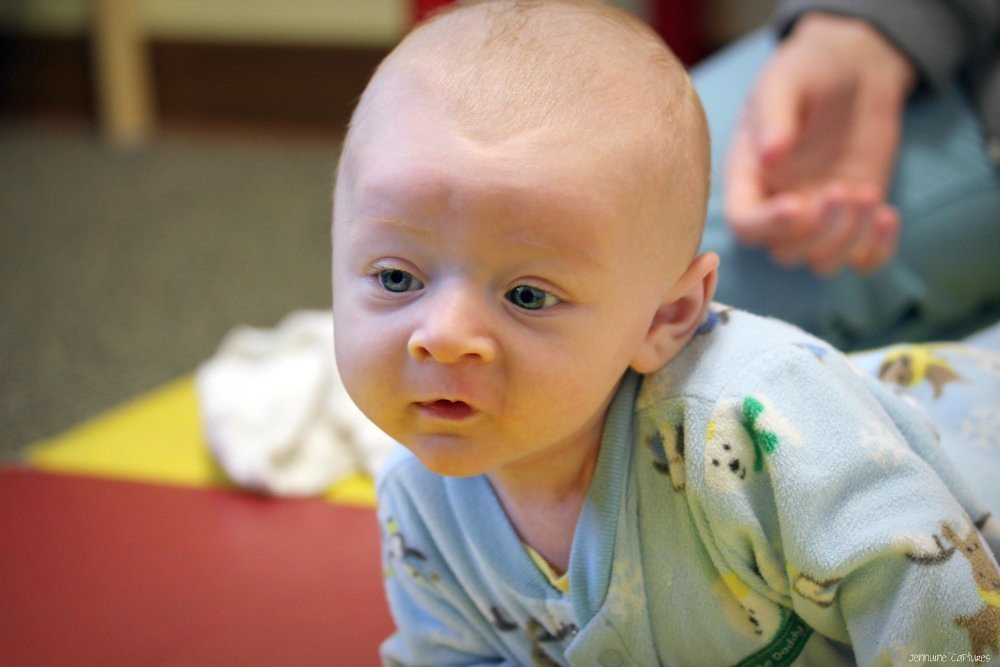How Torticollis Effects Brain Development
Life is expressed throughout the whole body but is localized in the brain. It is the seat of intelligence. The brain is shaped by the perceptions it receives from the environment. The brain can better acclimate the body to the environment through this function. This is an essential quality that all life shares.
The brain couldn’t express the 5 main signs of life; assimilation, excretion, adaptability, growth and reproduction without knowing its environment. The brain develops environmental patterns through sensory input. The brain puts out what is put into it.
The brain receives input from 7 major senses: touch, taste, smell, sight, sound, vestibular and proprioceptor. This sensory input is fundamental for brain development. Body sensory input influences what the brain expresses back into the body.
Sensory input starts in utero (in the womb) for the baby even before all 7 senses are developed. The baby's brain receives its first input from the vestibular sense. The Vestibular sense analyzes overall balance, specifically how the brain and eyes are positioned to the environment. It is headquartered in the inner ear. Establishing the vestibular sense is critical at this point since eyesight is not fully developed at this moment.
Proprioception also develops in utero. The Proprioception sense focuses on how the rest of the body, the extremities and torso, are positioned to the environment. The main housing centers for Proprioception are found in the muscles and joints of the body.
The greatest concentration of Proprioceptors is found in the upper cervical spine. The suboccipital muscles of the upper cervical spine are the first muscles to develop in the womb. They directly attach the skull to the spine.
When the infant’s vision starts to develop, it makes a special connection between the vestibular and proprioceptor senses. This link is through an area of the brainstem called the vestibular nucleus. This 3-way conversation between the inner ears, eyes and upper cervical spine sends specific information to the cerebellum portion of the brain.
The cerebellum makes up about 79% of the neural connection found in the brain and is involved primarily in motor learning, balance, posture and fine movement coordination. The cerebellum is also connected with higher brain areas involved in language, attention, and mental imagery. The cerebellum is often called the seat of the “subconscious” and must develop first before higher cognition can mature.
Proprioceptor, vestibular and visual input assists the cerebellum in developing motor patterns for learning, balance, posture and fine movement coordination. Any disruption in the functional input from the upper cervical spine, eyes, and/or inner ear can negatively effect the output of how the brain develops and adapts.
Torticollis is one type of condition that negatively effects sensory input into the brain. Torticollis is a condition that involves incoordination of the neck muscles. Torticollis sometimes referred to as “wry neck”, is very common in newborns.
Torticollis presents with a persistently tilted head and rotated neck. Less severe torticollis presents with an infant favoring one side to look at or preferring to nurse on one side verse the other. Torticollis is most commonly caused by an upper cervical subluxation.
How can an infant get a vertebral subluxation?
The two most common ways an infant can get a subluxation are through restricted positioning in-utero and from a difficult or traumatic birth that stretches the muscles of the neck.
An upper cervical subluxation creates a disruption in the input to the brain, especially through the vestibular, proprioceptor and visual senses. Instead of seeing the environment through a balanced frame and even field of vision, the brain takes in the world “tilted.” The brain will develop how it perceives the environment based on this imbalance.
If left uncorrected, motor patterns for learning, balance, posture and fine movement coordination will develop based on the compensation due to the head tilt and rotated neck. The deviation becomes the default. The brain can’t develop to its greatest potential. Abnormal or less than ideal motor patterns, balance and posture can result.
The aim of Chiropractic is to adjust the vertebral subluxation of the upper cervical spine. A vertebral subluxation creates a sensory input disruption. Correcting this by an adjustment improves the function of proprioceptors found in the muscles and joints of the cervical spine. There is now better coordination between the upper cervical spine, inner ears and eyes.
The cerebellum is now receiving a better interpretation of its environment. The brain can now respond to environmental changes better. Motor patterns for learning, balance, posture and fine movement coordination can develop at a higher potentiality. Better function equates with better health.
- Jarek Esarco, DC, CACCP
Related Blogs:
Can Infants Get Vertebral Subluxations?
How a Head Tilt Effects Brain Chemistry
Unlevel Spine/Unlevel Head
Brain Development and Pediatric Chiropractic
The Vestibular System Influence on Eye Movement, Posture and Cardiopulmonary Function
Muscle Control of the Upper Cervical Spine
Chiropractic: 101







